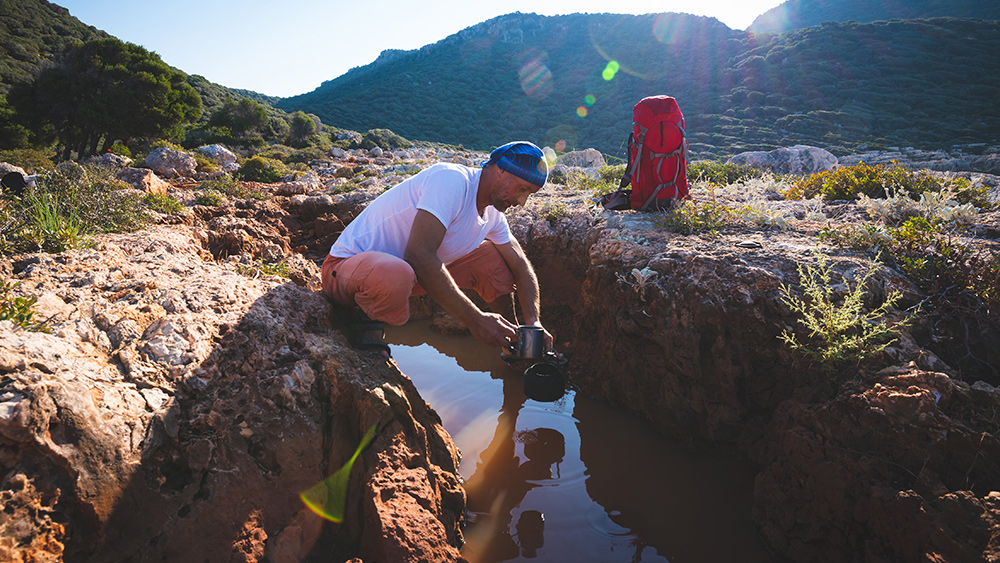What are skills, rules and principles that will help you survive the wilderness alone?
01/05/2022 / By Mary Villareal

Being alone in the wilderness means that you’re the only person you can depend on – and it requires a special frame of mind to ensure that you can beat the odds.
The first, and most important, step is to become aware of what it means – and what it demands of you. A person is more susceptible to his inner fears without the presence of others to distract him from them, so you have to be consciously aware of them to help you overcome these fears.
Your survival could depend on a simple system of rules, first of which is your mastery of some important outdoor skills, such as shooting a gun, using a knife, knowing wildlife and distinguishing kinds of plants. You should also be able to swim, make a fire, build a shelter, find good, use signals, and learn first aid.
Surviving in the wilderness doesn’t have to be elaborate. Plan things out in advance based on the environment and the activity that you have in mind. Map out your destination clearly and learn as much as you can about it. Always let someone else know where you are going, so they will know where to look if they don’t hear from you after a specified amount of time.
As a rule, survival items should be carried on your person, not in your pack, in case something goes wrong.
Knives, for instance, have plenty of uses and are best put on your belt. Knives can serve as a hatchet or a hammer and can take care of everything from cleaning a rabbit to creating an animal snare.
A canteen and a pocket-sized survival kit such as matches, first aid supplies and fishing hooks should also be carried on your person.
Prevention is still better than cure
The second point to remember is to practice prevention. For example, preventing hypothermia is better than trying to treat it in the wilderness, so if it rains, get inside your tent to dry off and keep warm. If you get your boots and jeans wet in the water, dry them over a fire. (Related: Wilderness survival skills that also work in an urban environment.)
To prevent encounters with wildlife, store your food in water-proof and scent-proof bags in a tree at some distance from camp, and don’t eat inside your tent – not even a candy bar – to avoid bear attacks that are prompted by animals smelling and attempting to get food.
You also have to be physically ready. Survival is about attitude as much as it is about physical conditioning. While you could buy all the survival equipment in the world to get ready for an SHTF scenario, you need to be in reasonably good physical shape to make it: Hiking in the forest, running from wildlife, or carrying your survival bags in itself need strength and stamina.
A healthy survival mindset is also necessary: seeing yourself as strong, confident and capable increases your chances of surviving alone.
Studies of crime victims reveal that those who are often assaulted or mugged on city streets are those who look like they feel they are victims. Among the greatest threats in survival scenarios are feelings of isolation, which can make you play the victim card. Do not permit yourself to such a luxury. Instead, make yourself face the reality that your survival depends on yourself. Do not become a victim of your circumstances; instead, stand on your legs and fight back.
Surviving in the wilderness takes a combination of basic skills and rules coupled with awareness and a desire to be prepared, both physically and mentally.
Watch the video below for more survival tips:
The above video is from the SHTFPrepping101 channel on Brighteon.com.
Sources include:
Tagged Under: bug out, first aid, navigation, off grid, outdoors, preparedness, Preppers, prepping, self-reliance, SHTF, survival, survival skills, Survival Tips, wilderness, wilderness survival
RECENT NEWS & ARTICLES
COPYRIGHT © 2018 PANIC.NEWS
All content posted on this site is protected under Free Speech. Panic.news is not responsible for content written by contributing authors. The information on this site is provided for educational and entertainment purposes only. It is not intended as a substitute for professional advice of any kind. Panic.news assumes no responsibility for the use or misuse of this material. All trademarks, registered trademarks and service marks mentioned on this site are the property of their respective owners.




















